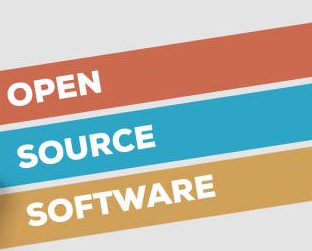Introduction
Open-source software has recently gained significant popularity as an alternative to proprietary software. Unlike proprietary software, open-source software offers users access to the source code, which they can modify, distribute, and use without restriction. While open-source software presents several advantages, it also comes with a few drawbacks that users should consider before making the switch. In this article, we’ll explore the pros and cons of open-source software, to help you make an informed decision about whether it’s the right choice for you or your organization.
What is Open-Source Software?
Open-source software refers to computer software that is distributed with its source code, allowing users to access, modify, and distribute it freely. Unlike proprietary software, where the source code is kept secret, open-source software is developed through a collaborative and community-driven process, where developers from around the world contribute to the project. This allows for greater transparency, flexibility, and customizability in software development, as well as the ability for users to access the software without cost.
Open-source software is used in a wide range of applications, including operating systems, web development, databases, office productivity suites, and more. Some well-known examples of open-source software include the Linux operating system, the Apache web server, the MySQL database, and the LibreOffice productivity suite.
Pros and Cons of Open-Source Software
Open-source software presents several advantages and disadvantages, which we will explore in-depth below:
Pros:
- Cost Savings: One of the most significant benefits of open-source software is that it is free to use, modify, and distribute. This can result in significant cost savings for individuals and organizations, who would otherwise have to pay for proprietary software licenses.
- Flexibility: Since open-source software is open to modification and customization, users can tailor the software to meet their specific needs. This level of flexibility allows for greater innovation, experimentation, and creativity in software development.
- Transparency: With open-source software, the source code is available to anyone who wants to view it. This level of transparency allows for greater security, as bugs and vulnerabilities can be quickly identified and addressed by the community of developers.
- Community Support: The open-source community is vast and diverse, with developers from all over the world contributing to the development and improvement of the software. This means that there is a wealth of resources and support available for users of open-source software.
- No Vendor Lock-in: With proprietary software, users are often locked into a specific vendor or platform, making it difficult to switch to other software. Open-source software, on the other hand, allows users to migrate to different platforms and vendors with relative ease.
Cons:
- Lack of Support: While the open-source community provides a wealth of support and resources, there is no guarantee that users will receive the same level of support as they would with proprietary software. This can be a disadvantage for users who require extensive support and assistance.
- Compatibility Issues: Since a diverse group of developers develops open-source software, there may be compatibility issues with other software and platforms. This can make it difficult for users to integrate open-source software with their existing systems.
- Security Risks: While open-source software is often more secure than proprietary software, it is still vulnerable to security risks and vulnerabilities. Since anyone can view and modify the source code, there is a risk that malicious actors could introduce vulnerabilities or backdoors into the software.
- Usability: While open-source software is often highly customizable, it can be challenging for non-technical users to use and configure the software to meet their needs. This can result in a steep learning curve for users who are not familiar with the software.
- Limited Features: While many open-source software applications are feature-rich and powerful, some may lack the same level of functionality and features as their proprietary counterparts. This can be a disadvantage for users who require specific features or functionality unavailable in open-source software.
The decision to use open-source software depends on the specific needs and requirements of the user or organization. While open-source software presents many advantages, it also comes with a few challenges that users should consider before making the switch.
Thoughts
Open-source software can be a powerful tool for users who are looking for flexibility, transparency, and cost savings. However, it also presents certain challenges that users must consider before making the switch. By understanding the pros and cons of open-source software, users can make an informed decision about whether it’s the right choice for them or their organization. Whether you’re a software developer, a business owner, or a casual user, open-source software offers a compelling alternative to proprietary software that is worth exploring.



